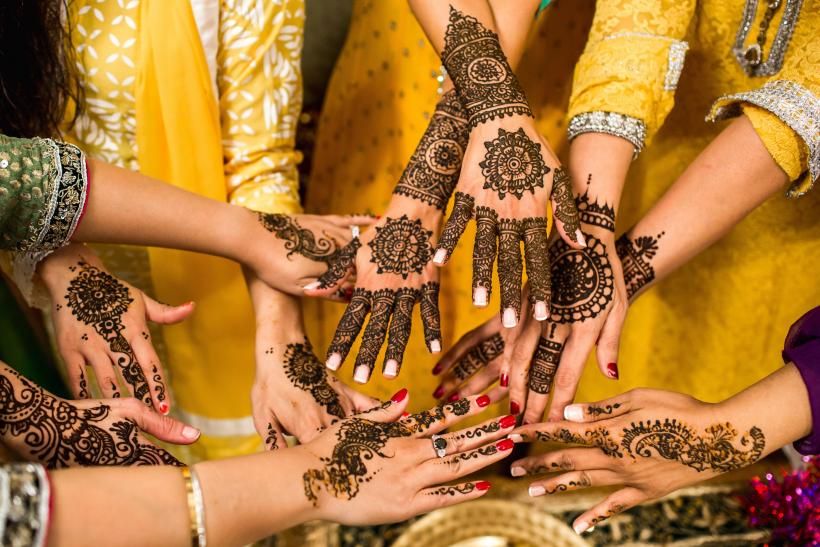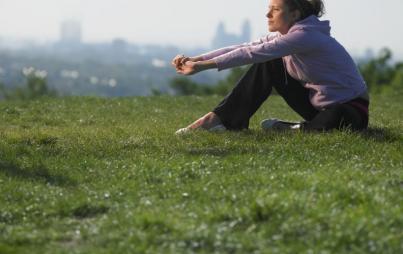
Photo by Vitaliy Lyubezhanin on Unsplash
“A woman has two lives,” says the priest. “One as a daughter, in her parents' home and one after she is married, as a wife.”
So where does that leave me? I am neither daughter nor wife, having left both my parents' house and my husband.
This is what I think as I watch my friend perform the ritual that leads her from one role to another in the mandap, the four-pillared structure in which Hindu weddings take place.
The mandap in question is square. It is situated in an old English manor. The green lawn glistens through the paneled windows. Beyond the landscaped gardens rolls a golf course. Indian weddings are notoriously long. We will be here all day.
I too have sat inside a mandap. But when you are inside, getting married, there are lots to keep you occupied: garlands to exchange, too-sweet marzipan-tasting Kaju-Katri to cram into each other’s mouths, Sanskrit verses to repeat. Inside, there is the flicker of the fire that couples walk around as part of the ceremony, the flurry of multi-colored petals raining down on you from your brothers, sisters, parents, and priest. The warmth, the people inside, as well as the people surrounding the mandap, support your marriage and hold you together.
In Indian society, there is no place for a lone woman.
An Indian woman always exists in relation to everyone else — daughter, sister, wife, mother. The idea of a woman as an independent entity is so inadmissible that in the past, when her husband died, she was burnt along with him on the funeral pyre. A woman alone stands apart from society.
From the outside, the view of the mandap is different. As I watch the ceremony now, other thoughts occur to me. Like why does the mother of the bride have to wash the groom’s feet to welcome him into the family? It is an act of humility that all mothers of the bride perform — women who have navigated diverse cultures, speak multiple tongues, have raised children, worked and cared and cooked for hundreds of people — bowing before a young man.
Why is it not the other way around? Why don’t the groom’s family do the same? Why don’t the men?
A sheet is put up between the bride and groom. The moment it is dropped, says the priest, is when the bride and groom first lay eyes on each other.
“That’s how it was for me,” whispers the old woman next to me. “ I was so nervous!”
You Might Also Like: Raising A Glass To Grace Gelder: First Woman In Britain To Marry Herself
That is not how it is for my friend, who met her partner on Tinder and has been living with him for about a year. Why are we still performing these outdated rituals?
“How do you feel?” I ask my friend at lunch.
“Like a clown,” she scowls.
She looks weighed down by her beaded sari, gold jewelry, and layers of makeup. This is not her thing. Her father was so taken aback when she entered the hall that it brought tears to his eyes. It's not my thing either, which is why I’m wearing a chiffon dress instead of a heavy silk sari.
I no longer dress for tradition, men, or other people’s expectations.
There is a break between events. People go to their rooms to change outfits, but I’m not staying at the hotel, and I’m not changing. I sit in the bar and read The New Yorker. People come and go. We strike up conversations. They die down. I get back to my reading.
The day stretches on. Civil ceremony, drinks reception, dinner, another reception. In his speech, the father of the bride talks about the arguments she used to have with her mother as a child because she refused to wear dresses. My friend would hide her beloved trousers because her mother threatened to throw them away. Everyone laughs. I relax. After this day, she will continue to wear trousers. She will continue to be the same strong-willed person she always was. In fact, a game played in the mandap determines this; the person who sits down first after completing the final circuit of the fire will wear the trousers in the relationship. She sat down first.
We dance. My friend has changed again, into a sari, a lighter one that she carries with grace. She is her old self but different. Full of love and joy, redefined as she enters this new phase of her life. She is like tradition, which continues through the ages but never stays the same.
I leave. The wind outside whips my hair and lifts my dress. My mother is waiting to pick me up. A woman who has made up her own path, in her own way, since leaving my father years ago. We drive in the light of the moon past the landscaped gardens and pitch black golf course. With my mother, I drive into the wild, open night.








